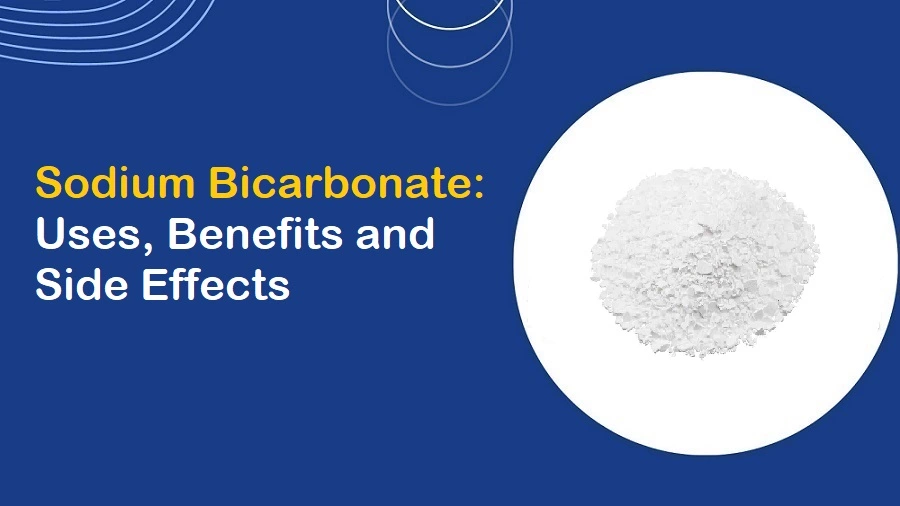Article
14 December 2023
Sodium Bicarbonate: Uses, Benefits, and Side Effects
Pine Derivatives

Table of Content
-
Article
14 December 2023
Pine Derivatives

-
Sodium Bicarbonate Powder, commonly known as baking soda, stands as a versatile compound with a myriad of applications in various fields. With the chemical formula NaHCO3, this white crystalline substance has found its way into homes, industries, and laboratories. In this comprehensive exploration, we will delve deeper into the extensive uses, benefits, and potential side effects associated with Sodium Bicarbonate Powder, focusing not only on its applications in everyday life but also on the ingredients it is typically paired with within diverse contexts.
Sodium Bicarbonate’s applications go far beyond its role as a leavening agent in baking and its household life hacks. Its chemical properties and versatility have led to its incorporation into a wide array of products and processes. Sodium Bicarbonate Turkey is widely utilized in personal care products, standing out, particularly in natural deodorants and body powders. It serves as a crucial ingredient when blended with essential oils and natural fragrances, delivering odor-neutralizing properties and guaranteeing formulations that are gentle on the skin.
Within the realm of cleaning products, Sodium Bicarbonate frequently teams up with elements such as vinegar, lemon juice, and essential oils. These blends give rise to potent and eco-friendly cleaning solutions, capable of addressing a multitude of household cleaning chores, including surface scrubbing and the elimination of stubborn stains.
Understanding Sodium Bicarbonate’s chemical formula, NaHCO3, provides a foundation for exploring its interactions with other substances. When Sodium Bicarbonate reacts with acidic ingredients, such as vinegar or lemon juice, it produces carbon dioxide gas, which contributes to its leavening and effervescent properties. Its amphoteric nature, enabling it to act as both an acid and a base, makes it compatible with a wide range of substances, expanding its areas of application.
At its core, Sodium Bicarbonate consists of a sodium (Na) cation, a bicarbonate (HCO3−) anion, and a hydrogen (H+) cation. The bicarbonate anion is a polyatomic ion composed of one carbon (C) atom, three oxygen (O) atoms, and one hydrogen (H) atom. Structurally, Sodium Bicarbonate forms a crystalline solid with a monoclinic crystal system. The sodium ion is surrounded by six oxygen atoms arranged in a distorted octahedral geometry, while the carbonate ion (CO3^2-) forms a trigonal planar structure. This intricate arrangement is the foundation for Sodium Bicarbonate’s diverse chemical behavior.
Sodium Bicarbonate’s reactions in organic chemistry are wide-ranging and significant. One of its primary functions in the culinary world is as a leavening agent. When Sodium Bicarbonate reacts with an acid, such as vinegar or yogurt, it undergoes a decomposition reaction, producing water, carbon dioxide gas, and a corresponding salt. This reaction is vital in baking, where the released carbon dioxide gas creates bubbles, causing the dough to rise and resulting in light, airy baked goods.
Additionally, in organic chemistry, Sodium Bicarbonate is employed as a mild base due to its amphoteric nature. It reacts with acidic compounds, neutralizing them and forming water-soluble salts. This property makes it effective in various applications, including neutralizing acidic spills, regulating pH levels, and mitigating the effects of certain acidic toxins in the human body. In the medical field, it is administered intravenously to alkalize the blood, aiding in the treatment of certain medical emergencies. Sodium Bicarbonate’s interaction with acids is also evident in its role as an antacid. In the human stomach, where gastric acid can cause discomfort and heartburn, Sodium Bicarbonate neutralizes the excess acid, providing relief. This reaction involves the bicarbonate ion reacting with hydrogen ions (H+) to form water and carbon dioxide, reducing the acidity in the stomach.
The combination of Sodium Bicarbonate with these ingredients extends its benefits, offering effective solutions for various tasks while minimizing environmental impact. Natural cleaning products made with Sodium Bicarbonate and compatible ingredients provide households with eco-conscious alternatives to conventional cleaning agents. Additionally, personal care products incorporating Sodium Bicarbonate and essential oils offer users gentle and pleasant experiences, combining functionality with a refreshing aroma.
While the ingredients commonly used with Sodium Bicarbonate enhance its efficacy, it is essential to be aware of potential side effects. Individuals with sensitive skin should exercise caution when using products containing essential oils, as they can cause skin irritation or allergic reactions in some cases. Additionally, proper ventilation is crucial when working with Sodium Bicarbonate and acidic ingredients to avoid inhaling any gases produced during chemical reactions.
Sodium Bicarbonate’s synergy with various ingredients underscores its adaptability and effectiveness in different applications. Whether it’s in baking, cleaning, personal care, or beyond, Sodium Bicarbonate continues to demonstrate its value as a versatile compound. By understanding its chemical properties and exploring its compatibility with other substances, we unlock a world of eco-friendly solutions, contributing to sustainable living practices while enjoying the benefits of a remarkably versatile compound.
We're committed to your privacy. Tradeasia uses the information you provide to us to contact you about our relevant content, products, and services. For more information, check out our privacy policy.
Leave a Comment